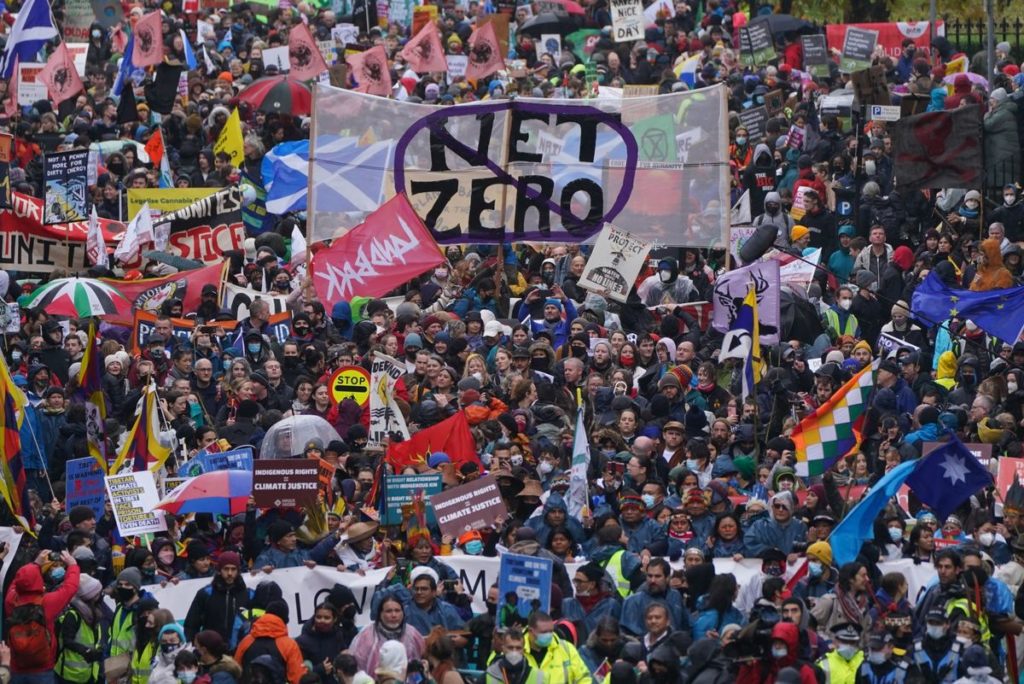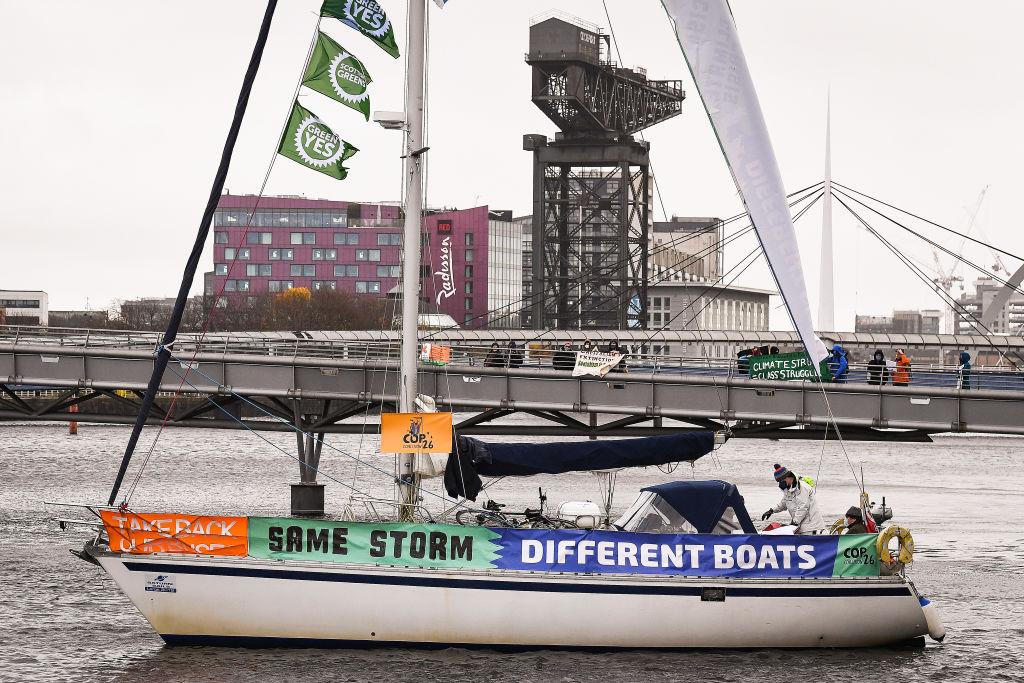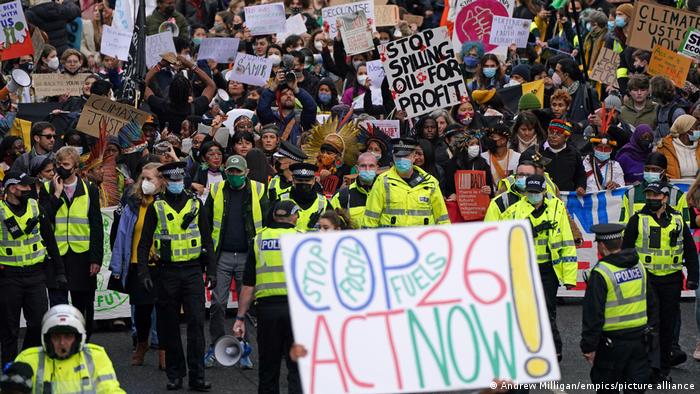
Introduction
COP26, otherwise referred to as the 26th United Nations Climate Change conference, was postponed this year due to the pandemic. COP stands for the ‘Conference of the Parties’—the annual meeting of governments to discuss climate action, pledges or goals, and their respective national plans.
This meeting marks the 26th time the Conference of the Parties met again, where no breakthroughs were accomplished. Only a handful of countries were on track to fulfill their part of the 2015 Paris Agreement, the vast majority being nowhere near hitting their intended targets. Certain government representatives still chose to debate the reality of climate change than to address climate change itself, while many more countries are relatively ill-equipped to effectively deal with the consequences that have been brought upon them. It is plain to see here that the political sphere is not budging.
The Intergovernmental Panel on Climate Change (IPCC) released a report stating that we are close to hitting the agreed-upon 1.5°C thresholds, declaring a “code red for humanity.” We are sitting at 1.2°C and climbing fast. This report was released earlier this year, and thus it was vital for the latest conference to bring about ground-breaking discussions—especially from developed Western countries who have disproportionately emitted more greenhouse gasses (GHG).
Key Outcomes of COP26
Shipping
Let’s start with some of the positive results from the meeting. One pivotal discussion focused on the shipping industry. As it stands, shipping has become more vital, and it is projected that at business-as-usual scenarios, GHG emissions that come from shipping could increase by 250% and even make up 17% of all GHG emissions by 2050.
The International Maritime Organization’s (IMO) targets were to reduce CO2 emissions of international shipping by 40% by 2030 compared to their 2008 levels (somewhere between 940-794 million tonnes of CO2 depending on the study and method conducted). Assuming they apply the 794 metric as their most recent study concluded, cutting 40% of that metric by 2030 sounds insufficiently ambitious, as the UN has claimed, considering 2022 is right around the corner.
As a result, the UN has invited IMO to review and set targets for 2030 and 2040, building towards a fully decarbonized shipping sector by 2050. Hopefully, this will exert pressure on the international shipping industry to significantly reduce emissions in the next decade. It’s also important to note that the IMO is a UN organization and that the opposition to this discussion comes from freight and ship owners because retrofitting ships and implementing greener technologies is a hefty sum. It is, thus, crucial for the IMO and the UN body to reconcile with the shipping industry to bring forth the proposed changes.
Financial assistance to developing countries

Another good outcome of the talks was the pledges and commitments to increase financial assistance to developing countries. It is high time that less fortunate countries receive more funding at the short end of the climate change stick. If anything, the developed nations of today who have historically engaged in imperialism have an obligation to aid those they have exploited.
This news, however, came at a time when the Green Climate Fund (GCF)—where the financial assistance is sent to and later distributed to developing countries—did not receive the $100 billion promised by developed nations, missing the preordained goal for 2020. It is alarming that they failed to deliver on their climate finance promise, and such a sentiment is likely reflected across developing countries worldwide. How is it fair to pressure developing countries into lowering emissions when the bulk of emissions come from developed countries that fail to guarantee financial assistance?
Despite the 2019 pledge to double financial aid by 2025 (~$79.6 billion) to address the failure of meeting $100 billion by 2020, these pledges are not legally binding—unfortunately, like any other goals to come out of a COP meeting. Some may argue that such treaties do not need to be legally binding as long as they facilitate the push towards keeping emission levels below 1.5°C, but what happens when they fail? Will there be any rightful consequences for the countries that are capable but reluctant to take firm action?
Pledges to curb deforestation
One hundred forty-one countries have signed the Glasgow Leaders’ Declaration on Forests and Land Use to reaffirm their commitments to sustainable land use and the protection of terrestrial ecosystems. One crucial pledge made by the signatories was to “implement and, if necessary, redesign agricultural policies and programs to incentivize sustainable agriculture, promote food security, and benefit the environment”.
As modern agriculture practices often result in land degradation, soil erosion, and forest clearings, this is good news. There is also the commitment to “conserve forests and other terrestrial ecosystems and accelerate their restoration”, which will be vital in the fight to keep temperature rise “well below 2°C […] pursuing efforts to limit it to 1.5°C”, since forests, soil, and other terrestrial systems act as carbon sinks to store CO2. Hence, these lands must remain undamaged to prevent the release of the stored CO2 and the substantial increase in atmospheric GHGs.
However, experts have cautioned that similar pledges to cut down on deforestation in the past have had little success. It doesn’t help that there has been a record number of murders of land and environmental activists, with a whopping 227 deaths in 2020. What will the international community do to protect activists in the future? These people embody “boots on the ground” actions, putting their own lives at risk to stand for something bigger than themselves. If the international community has agreed that the forests must be protected and restored, why do people continue dying protecting forests and other natural ecosystems?
“The end of coal in sight”
While this sentiment may be true (“to cease issuance of new permits for new unabated coal-fired power generation projects”), the devil is in the details. Unabated coal-fired plants are just coal-fired plants without CO2-reducing technology. The financing of abated coal-fired plants will continue. There’s flawed logic in this; I do not intend to criticize China or India for not agreeing to the terms, though any such criticism would be more than valid. I believe the fault in this lies with the Western world. Both China and India have over 1 billion people to look after, and with China being the “world’s factory,” it is unfair to say all their CO2 emissions are theirs alone when they are producing the goods everyone else trades for. This is yet another act of procrastination by the developed nations at decarbonizing, who should all be aggressively restricting themselves to energy generation with renewables or low-carbon fuels rather than pointing fingers at each other.
That being said, many developed nations are still investing in natural gas, undermining the fact that it contributes to CO2 emissions. Rightfully, they should be investing in renewables. So while the end of coal is in sight, it is still out of reach, and more drastic measures are needed to minimize temperature rise as we are on track for 2°C and well over the safe 1.5°C mark.
And let’s not forget the long road ahead of us. We have yet to phase out enough oil and gas to fully decarbonize by 2050. We are fighting against time to realistically and safely meet decarbonizing targets and cannot afford to postpone the deadline; not in developed nations, at least, who have had all the time in the world to implement real, impactful change.
(Inefficient) Fossil fuel subsidies to end

Last out of the significant outcomes of COP26 is the removal of inefficient fossil fuel subsidies. Offering subsidies to the fossil fuel industry indicates offering support to said industry; after all, these subsidies are funded by tax-paying citizens. Depending on whether our country subsidizes the fossil industry or not, some of us are losing fractions of our incomes into paying taxes that ultimately fund industries pushing us toward an apocalyptic future.
All in all, that is to say: you may not personally support the fossil fuel industry, but your money is certainly going into their pockets. In an agreement with more than 20 countries, it is stated that “[we] will end new direct public support for the international unabated fossil fuel energy sector by the end of 2022, except in limited and clearly defined circumstances that are consistent with a 1.5°C warming limit and the goals of the Paris Agreement.”
The wording is clever: it gives them leeway in still being able to subsidize even unabated fossil fuel plants according to the exception, but even then, the removal of subsidies (direct public support) is only for unabated fossil fuels, so the money is still likely to be spent on coal/oil/gas power plants that are only slightly better than unabated ones. One upside here is that there are mentions of subsidizing renewables like solar and wind to become cheaper than unabated fossil fuels in that same agreement. This, however, still does not guarantee the worldwide transition to renewable energy.
Conclusion
“Today, we can say with credibility that we have kept 1.5 degrees within reach. But, its pulse is weak.”
I could not disagree more with the COP26 president. Considering the wider world, it is hard to say that 1.5 degrees even feels within reach. Currently, we sit at 1.2 degrees and rising. How can we say it is within reach when we are on track to go up to 2.4 degrees and possibly anywhere between 3-5 by the end of the century? When a world leader like the USA cannot get its Build Back Better infrastructure bill to pass, it is increasingly worrying that developed countries are too polarized to pass significant green infrastructure projects to decarbonize by 2050 and simultaneously leave room for developing countries, who are expected (as developing countries do) to rise in CO2 emissions.
Even if we keep the temperature rise to 2°C, the difference between it and 1.5°C is drastic, with estimates from the UN and other experts predicting climate refugees in the hundreds of millions as a result of going over 1.5°C. The developed world already treats refugees with contempt and disdain; how will they handle hundreds of millions more, and how could that shape our politics? Could we see an increase in racism and discrimination against refugees and minority communities as a result? They have contributed the least to the crisis and will undoubtedly face the most suffering the world will ever see if the developed world fails to deliver on its mission to decarbonize. As of the time of writing this, 8,850,029 people have died from air pollution this year; to put that number into perspective, the Holocaust took the lives of 6 million people. Each year, the deaths from air pollution outnumber those murdered in the Holocaust, and it is only going to worsen if nothing is done to change our course.
We need to pressure our governments to mobilize our tools to push for a decarbonized future by 2050 and to start taking the matter seriously before our home is lit by flames beyond salvation.
